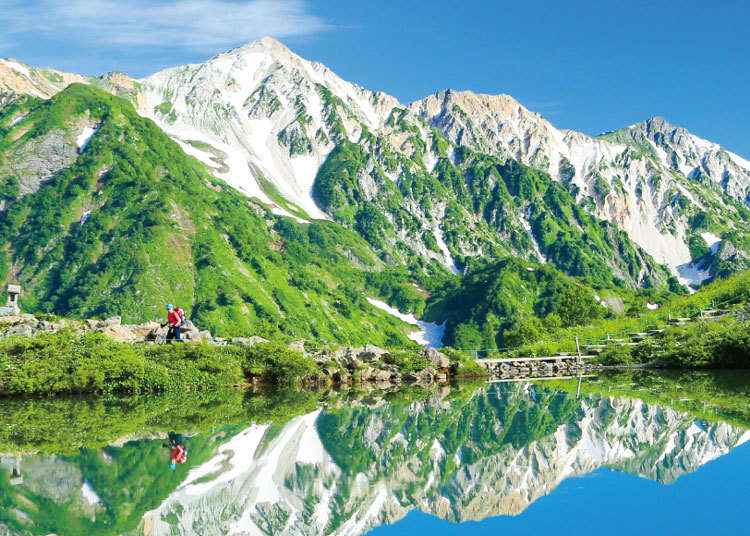
Every year, scores of tourists come just to enjoy Japan’s skiing and snowboarding season. Nagano Prefecture, which previously hosted the Winter Olympics, is one snow resort area skiers and snowboarders can’t miss.
Here, we’ll introduce Hakuba Valley in the Northern Alps of Nagano Prefecture. In this silver winter wonderland, there are numerous ski areas, and it’s where you can enjoy winter sports to your heart’s content! We’ll bring you an all-in-one guide to equip you with essential knowledge of Hakuba Valley.
What is Hakuba Valley?

Hakuba Valley is an area at the foot of the Northern Alps in Nagano prefecture, consisting of ten ski areas, including Hakuba, Otari, and Ōmachi. After hosting the 1998 Winter Olympics, it became a popular mountain resort famous worldwide for its offering of winter sports.
Standing at 3000 meters high, the Northern Alps is a wonder of nature, with its vast mountain ranges and abundance of powder snow. From ski slopes designed for beginners to 8000m long slopes meant for extended cruising, ten different ski areas are available for people of all levels of competency, allowing anyone and everyone to enjoy skiing.
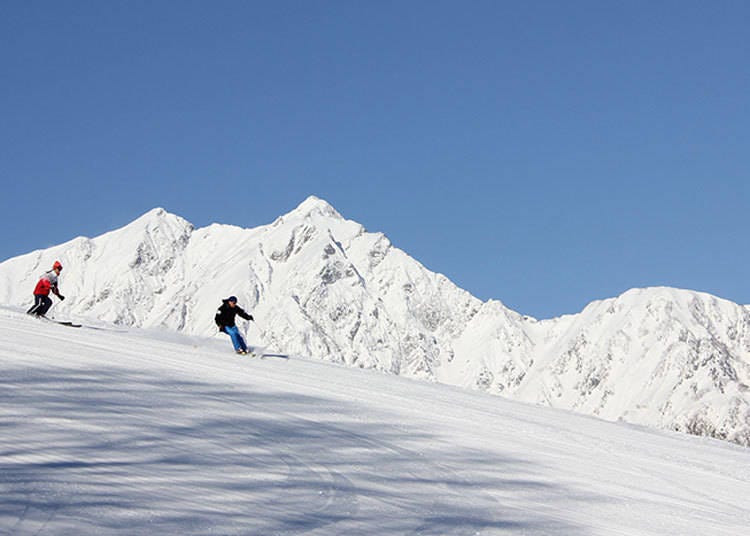
Ōmachi City is the main sightseeing area at the mountain foot of the Tateyama Kurobe Alpine Route. Hakuba Valley itself contains two ski areas, Jiigatake and Kashimayari. From beautiful natural environments for you to enjoy outdoor sports, to delicious cuisine in Ōmachi, it’s a charming and attractive place through and through. With a lake nearby famous for its selection of lake sports, this is one place that is bustling with visitors regardless of the time of the year.
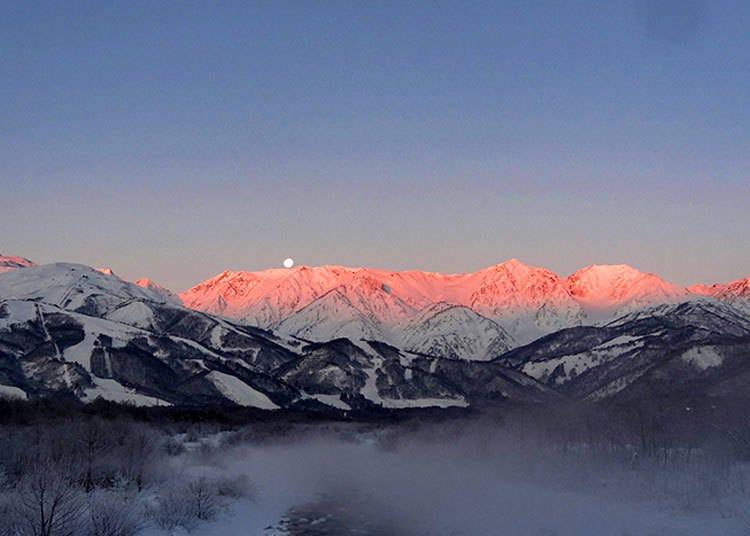
Hakuba Village is at the heart of the Hakuba Valley area. It contains one of the largest concentrations of ski resorts in Japan, including Hakuba47, Hakuba Iwatake, and Hakuba Sanosaka, with a total of five skiing areas. Its large scale has also gained worldwide acclaim and it is a place frequented by foreign visitors. During the green season, it also serves as the starting base for climbing the Alps.
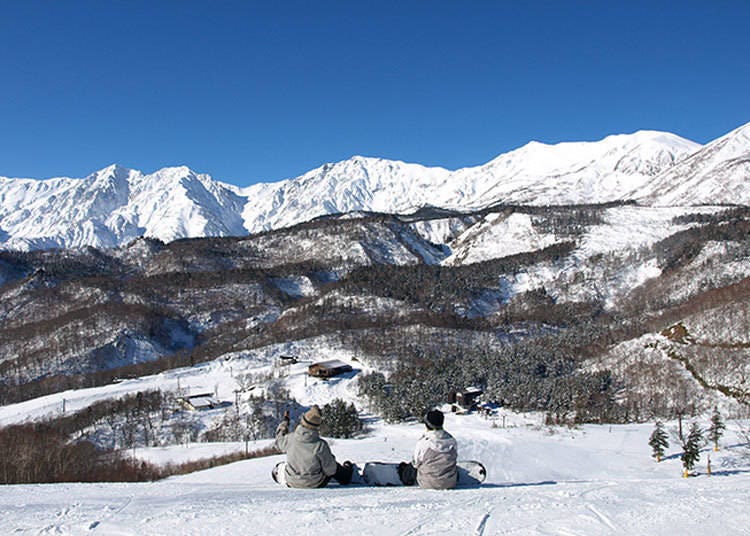
Otari village sprang up along the “Shio-no-Michi,” or salt trail, which follows the Himekawa river that runs from Kotaniyama mountain to the Sea of Japan. Having preserved their way of living in the mountains from times long gone, this knowledge has been protected and handed down to this day, birthing important tangible and intangible cultural assets. With three ski resorts in the area, including Tsugaike Kōgen Ski, Hakuba Norikura Onsen, and Hakuba Cortina, it boasts some of the highest amounts of snowfall in Japan as well.
How to get to Hakuba Valley
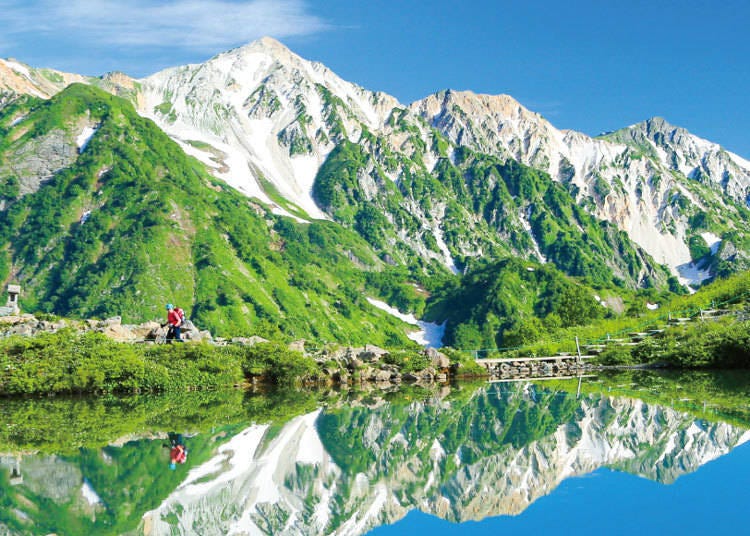
To access Hakuba Valley, you can either use the Shinkansen bullet train and bus, or take the highway bus.
If you’re using the shinkansen and bus, you can take the Hokuriku Shinkansen from Tokyo and transfer to an express bus, and it can take as little as two hours and forty minutes. After taking the shinkansen from Tokyo station to Nagano station, change onto a highway bus, which will take you to Hakuba Valley in an hour,
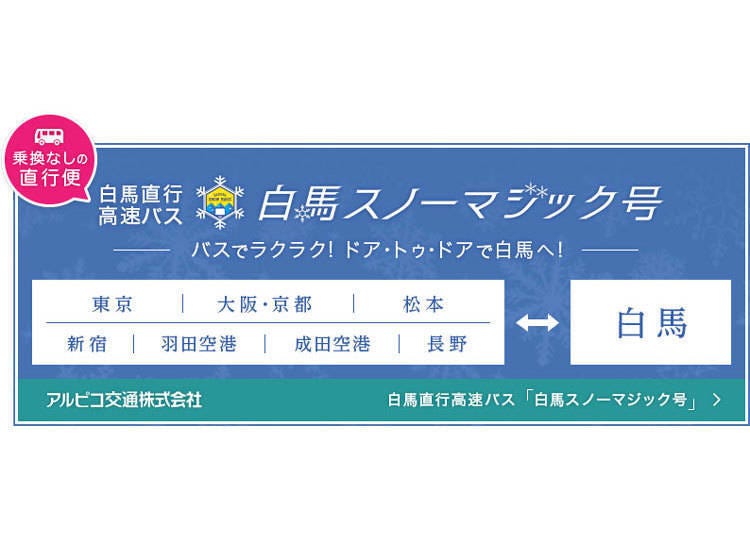
Besides that, you can also take the highway bus, the “Hakuba Snow Magic,” which departs from Shinjuku station, Haneda Airport, and Narita Airport directly for Hakuba. For example, if you were to board from Shinjuku, it would cost between 2,700 yen and 6,600 yen one-way towards Azumino, Ōmachi, and Hakuba.
The ski areas in Hakuba Valley also run their own shuttle bus services, allowing you to visit other locations with just one as your starting point. If you use the shuttle services in Hakuba Valley well, you can even plan an itinerary, such as doing a beginner’s course today or an Olympic course tomorrow.
Dressing for Hakuba’s weather
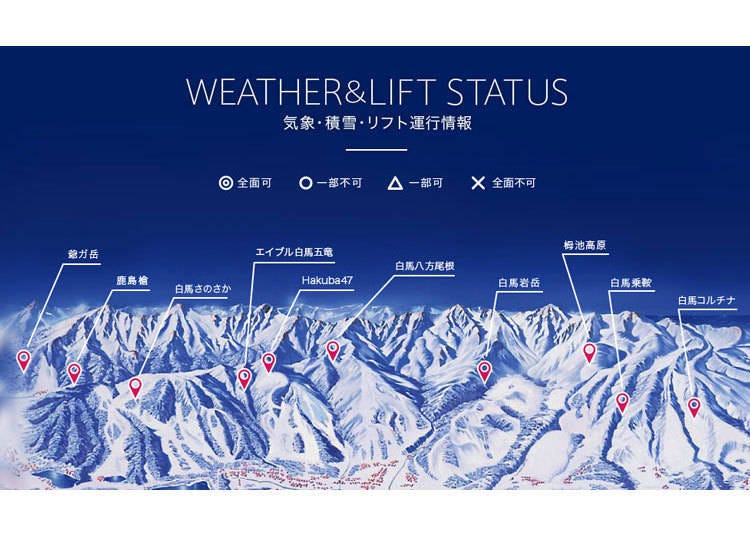
Hakuba is coldest from January to March, and at its coldest, it dips below freezing. For those in Hakuba for winter sports, wrapping up warmly and protecting against the cold are of top priority, so it’s essential to bring thick coats and other cold wear.
From April to May, it gets a little warmer as spring marches in, though it’s not uncommon for snow to continue falling until April, so it’s advised to bring at least a light coat or warm sweater. The summer from June to August can see temperatures climb past 30 degrees Celsius for days, though temperatures are more bearable up in the mountains. In late summer, temperatures drop considerably after sundown, resulting in significantly cooler evenings, so it’ll be good to bring a light jacket or cardigan.
In September and October, the highest temperature is between 15 to 25 degrees Celsius. The temperature drops sharply between sunset and sunrise, so it’s essential to bring cold wear. From November to December, the average temperature is below 5 degrees Celsius, the average winter temperature there. Coats, mufflers, gloves, and other winter wear are necessary.
For more weather information, you can check out the official website for Hakuba Valley for real-time weather updates.
Other points of note when visiting Hakuba Valley
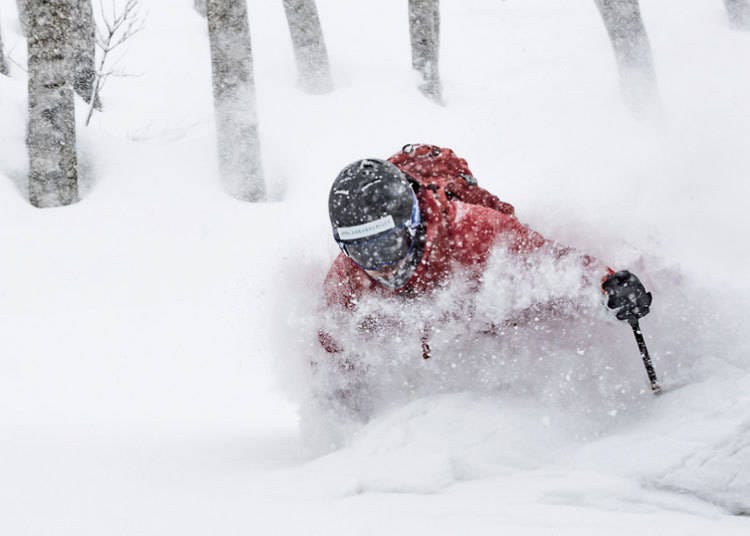
When visiting Hakuba Valley, there are several rules and regulations that you must respect and follow, called the “Hakuba Rules.” These official rules ensure the safety of all the people in Hakuba Valley so that everyone may enjoy winter sports there.
- When entering a restricted area, there is a risk of causing avalanches on the ski slopes and other major accidents. Do not enter the restricted areas for any reason whatsoever. For those who flout the rules, lift tickets will be confiscated, and offenders will be expelled from the premises.
*The restricted areas are only skied on for safety checks by staff. - Do not enter any locked courses or restricted areas, and follow all instructions from signs and staff.
- Forested regions outside the ski areas are national parks, and are neither maintained nor managed by the ski areas.
- In the event of any rescue operation for an accident that occurs outside the ski areas, the affected parties will be liable for any costs incurred.
- Regardless of whether inside or outside the ski areas, by the Hakuba Rules, all users of the ski areas must follow the instructions of patrol staff and other resort personnel.
- The Hakuba Rules are put in place to ensure the safety of all skiers, so please follow them.
By following the six rules above, you can have a safe and enjoyable winter sports holiday!
Hakuba Valley is a winter wonderland where you can enjoy everything from winter sports to mountain climbing during the green season, and is popular amongst visitors all year round for its sprawling greenery and beautiful natural landscapes. Do be sure to make a trip down for an unforgettable holiday!
Hakuba Ski/Snowboard Video Service: HAKUBA-Labo
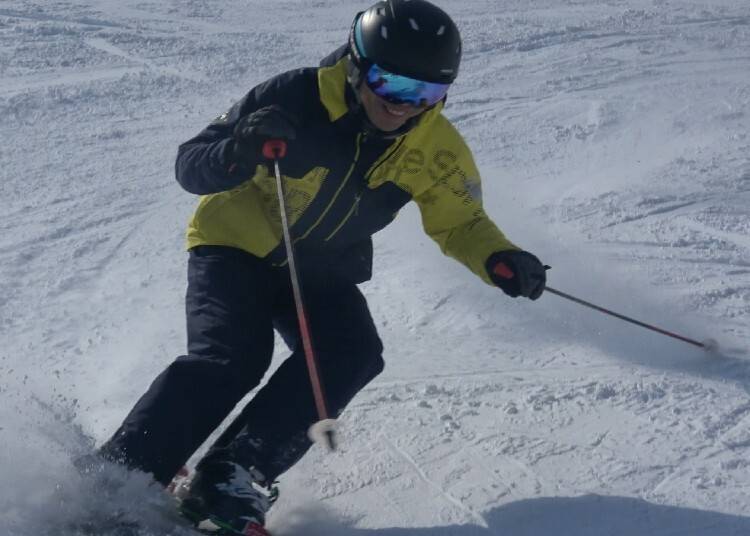
Want footage of your time? Book a professional ski and snowboard photographer in Hakuba!
You will be accompanied by a local professional photographer/videographer who's thoroughly familiar with the slopes. They will take quality 4K footage of you and your group enjoying Hakuba's powder snow.
・Pro videographer will meet you on the slope
・Shoot 4K video of your runs
・Quality service on a budget (30 minutes from 3,000 yen)
・Quick delivery of footage data (online or DVD)
・Taken at Hakuba Happo-One Ski Resort (Others can be consulted)
・Bonus: Slope guide service in English is included
* This Hakuba ski photography/videography service is operated by HAKUBA-Labo. For details, inquiries, and reservations, tap the link below.
▼Early-bird lift tickets are recommended for winter skiing in Japan▼
- Area
- Category
*Prices and options mentioned are subject to change.
*Unless stated otherwise, all prices include tax.
Recommended places for you
-

Hotel Green Plaza Hakone (Review): Soak in the View of Mt. Fuji from an Open-Air Hot Spring
by: Mayumi Kawai
-

23 Quirky and Fun Things to Do in Akihabara
by: Himanshi Shah
-
Ad

Tokyo Comedy Bar: Where Jokes and Craft Beer Flow Freely
-
Ad

Lapoppo Farm, one of Japan's leading makers of sweet potato treats! An in-depth guide to the secrets behind its popularity, including best-selling products and facilities!
-

Step Into the World of Chiikawa: Immersive 'Chiikawa Park' to Open in Ikebukuro's Sunshine City This July!
-

Discover Japan Duty Free GINZA: A Unique Shopping Experience in the Heart of Tokyo
by: Chehui Peh
Inspiration for Accommodations
-

Enjoy Mt. Fuji from the Comfort of Your Room! Recommended Ryokan with Mt. Fuji View
-

Stay Near the Cherry Blossoms! Hotels for Cherry Blossom Viewing in Tokyo
-

Family-Friendly Hotels with Free Shuttle to Disneyland: Convenient Access for a Magical Stay
-

Top Ranked Hakone Hotels with Mt. Fuji View: Enjoy Stunning Scenery from Your Private Space
-

Convenient Tokyo Hotels with Airport Shuttle: Ideal for Families and Heavy Luggage
-

Stunning Tokyo Tower View Hotels: Enjoy Spectacular Scenery from Your Private Space
-

Convenient Asakusa Hotels with Kitchens: Ideal for Extended Family Visits
-

Experience Luxury: Hakone's 10 Best Five-Star Accommodations
-

Enjoy Mt. Fuji Autumn Leaves! Top Hotels Near the Popular Autumn Leaves Corridor
-

Experience Hakone Fall Foliage from Your Room with Stunning Views
-

Tokyo Train Map: Your Essential Guide to Subways and Railways
-

16 Secrets About Mt. Fuji, the Symbol of Japan: Even Japanese People Don’t Know That?!
-

Don’t Ski? Enjoy These 3 Fun Japan Winter Activities Near Tokyo!
-

JR Edition: Visit all of Tokyo in one Day with the Tokyo Metropolitan District Pass!
-

Tokyo Tsukiji|Tsukiji Area Map & Sightseeing Information
-

Tokyo Roppongi|Roppongi Station Area Map & Sightseeing Information
- #best ramen tokyo
- #what to buy in ameyoko
- #what to bring to japan
- #new years in tokyo
- #best izakaya shinjuku
- #things to do tokyo
- #japanese nail trends
- #what to do in odaiba
- #onsen tattoo friendly tokyo
- #daiso
- #best sushi ginza
- #japanese convenience store snacks
- #best yakiniku shibuya
- #japanese fashion culture
- #best japanese soft drinks




















